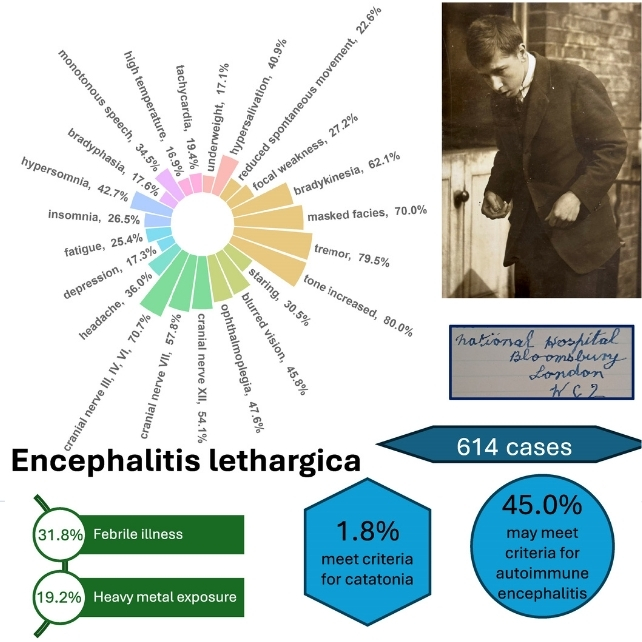"People have forgotten what life is all about," Robert De Niro's character says in the film Awakenings after being revived from the shut-down state he had been in for 30 years. "They've forgotten what it is to be alive."
Based on a true story told by Dr Oliver Sacks, Awakenings focuses with exquisite detail on the experiences of a few extraordinary people affected by a disease known as encephalitis lethargica, or the "sleepy sickness".
Yet far from being a rarity, this disease affected a million people worldwide during and after the first world war. Then it vanished and has remained a mystery for the past century. The question that has never been answered is: what caused it?
The disease was first described by a neurologist in Vienna in 1917. It was noted that the initial symptoms were similar to those of flu, but that's where the similarities ended. Over the next few weeks, some would be unable to sleep at all, while others would be so drowsy they could be woken for only a few minutes to eat.
About half died in this early phase, but those who survived were even more perplexing. After recovering, often returning to work, many started to notice stiffness, slowness in their movements and even that their eyes would get stuck in certain positions.
Sadly, this slowly progressed. And many were left – like De Niro's character – in a frozen state, unable to speak or move.
But that wasn't all. Many would develop monotonous or slurred speech. Some had changes to their mood, perceptions and personality.
In a study my colleagues and I conducted, we even came across four patients who developed kleptomania (compulsive stealing) as part of their illness.
What could have caused this?
Finding the origin of a disease isn't as straightforward as it sounds. HIV as a cause of AIDS or HPV causing cervical cancer were both long journeys and were not at all obvious early on. It's the same with encephalitis lethargica.
Given that it started suddenly and then went away, some have suggested it might be related to an infection. Spanish flu occurred around the same time, although the first cases of encephalitis lethargica were earlier.
We haven't found any influenza virus in the brains of people who were affected, so it doesn't quite fit in a simple way.
To look at what might be going on, we spent hours reading through the meticulously preserved records of more than 600 patients who had encephalitis lethargica.

We found that only 32% of them had had anything even remotely like flu in the year before their illness started. And less than 1% had an affected family member. So the flu infection story isn't very convincing – at least on its own.
What about something in the environment? 1917 was a fairly eventful year – to say the least – with the first world war involving an enormous mobilisation of people, arms and supplies. Perhaps it was some new chemical being used. Yet our study found no link to people who worked with particular substances.
More recently, a new theory for encephalitis lethargica has been proposed. The idea is that there might be an autoimmune process involved – that is, the body's natural defence mechanisms might have turned on itself and attacked the brain.
This happens elsewhere in the body. A reaction against cells in the pancreas causes type 1 diabetes, while antibodies to cells in the thyroid gland can trigger Graves' disease.
In the brain, the results can be devastating, and in recent years, we have recognised that multiple sclerosis also results from a problem with the immune system.
Something called autoimmune encephalitis is where certain antibodies attack nerve cells in the brain. We found that almost half of the patients diagnosed with encephalitis lethargica might have had autoimmune encephalitis, though it didn't fit the pattern for any of the types we recognise today.
How could this explain a disease that arose out of nowhere and caused such a range of symptoms? Some patients found that their movements and thoughts were massively slowed down. Others hallucinated, had bizarre delusions or even seemed to lose their sense of right and wrong.
This is where we may have to return to the idea of an infection, either flu or something else.
Some autoimmune conditions can be triggered by an infection of some kind, which may look a bit like something the body is familiar with. It's a good disguise for the invading bug, but once your body has recognised it, there's a risk it turns the body's defences on itself.
Does this all really matter? Is it worth solving a pandemic where the last survivor died two decades ago? Well, sadly, encephalitis lethargica wasn't the first neurological epidemic of its kind and – if we don't crack it – we won't be prepared for the next.![]()
Jonathan Rogers, Wellcome Trust Clinical Fellow in Psychiatry, UCL
This article is republished from The Conversation under a Creative Commons license. Read the original article.
